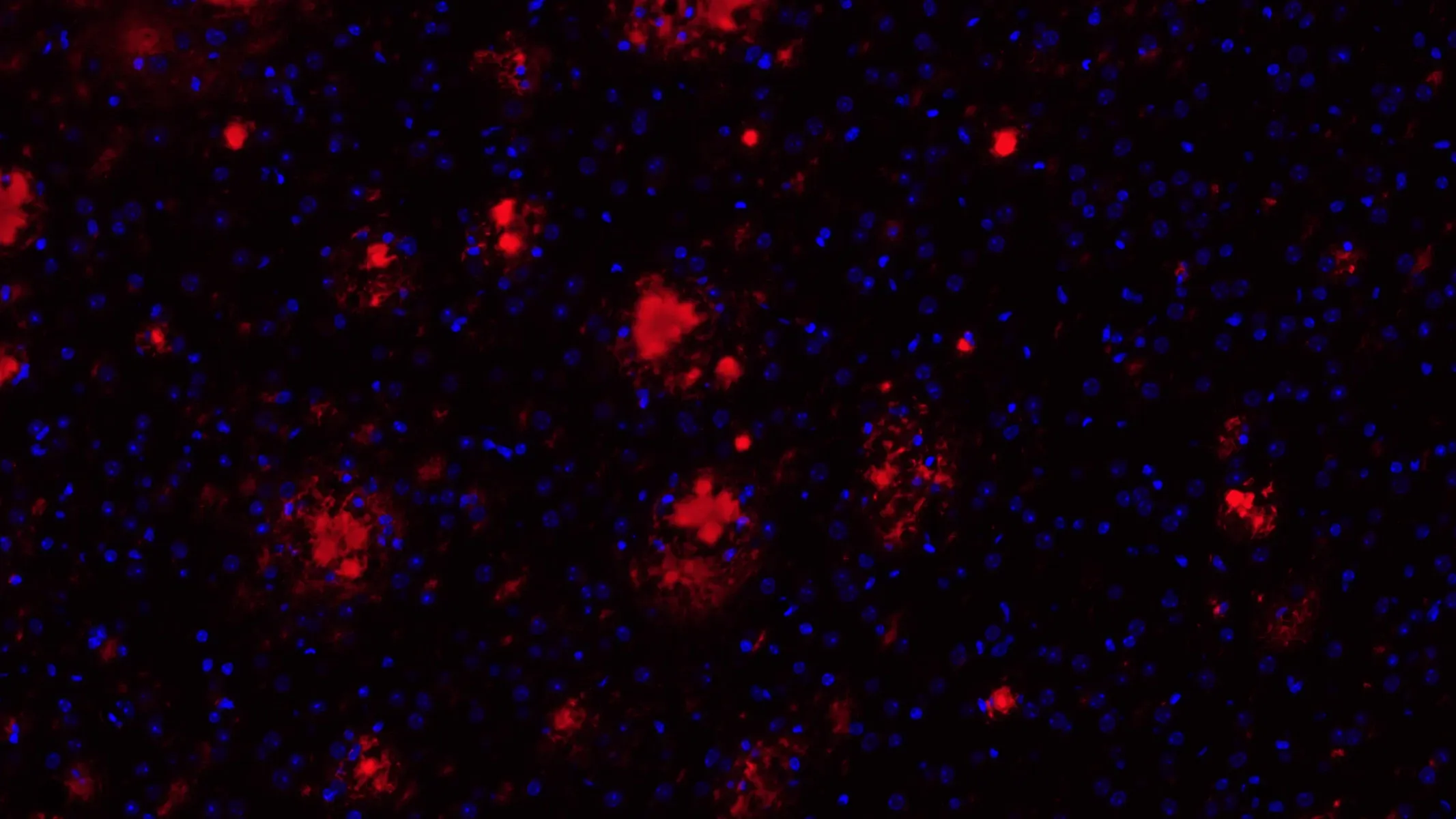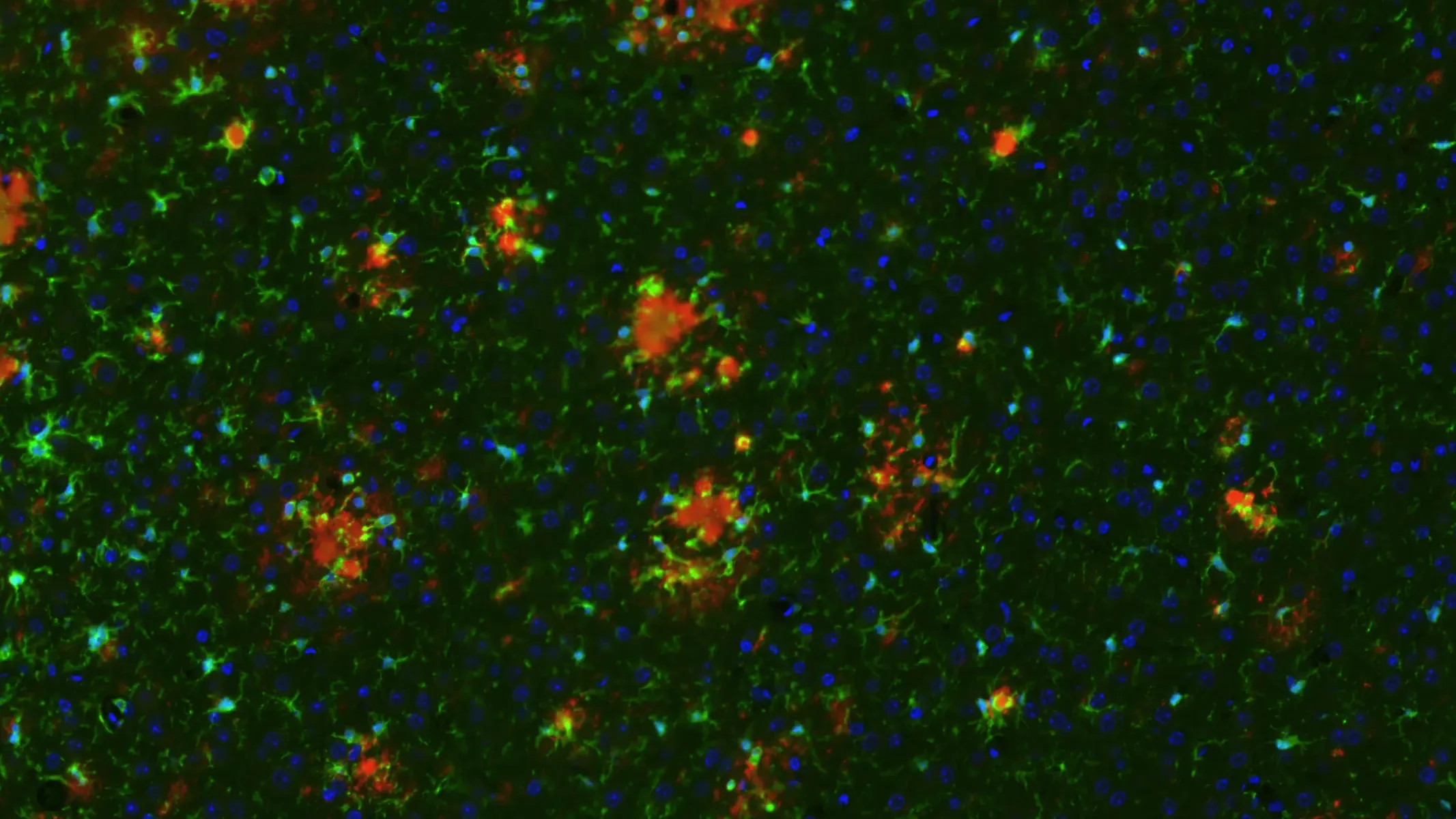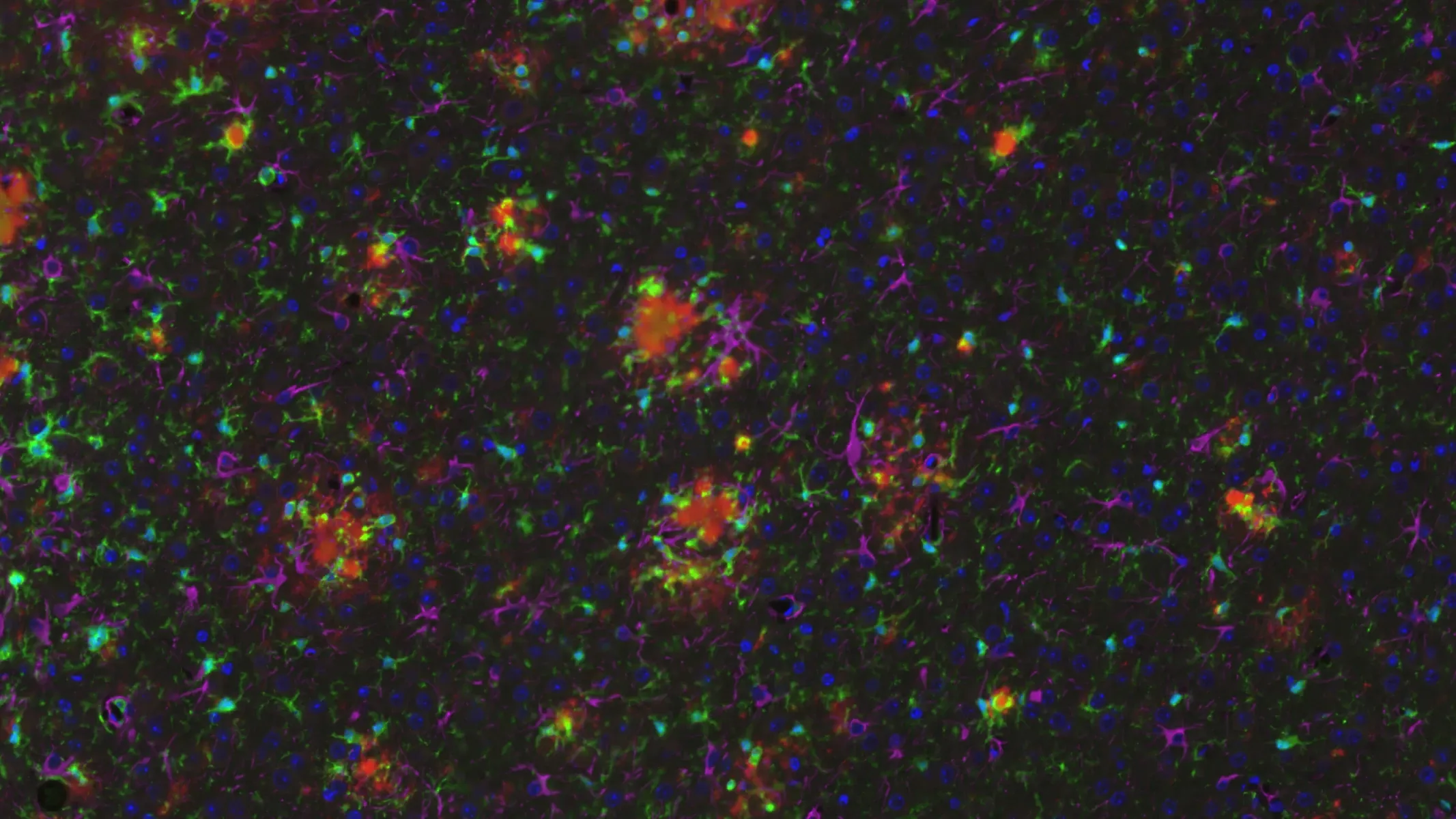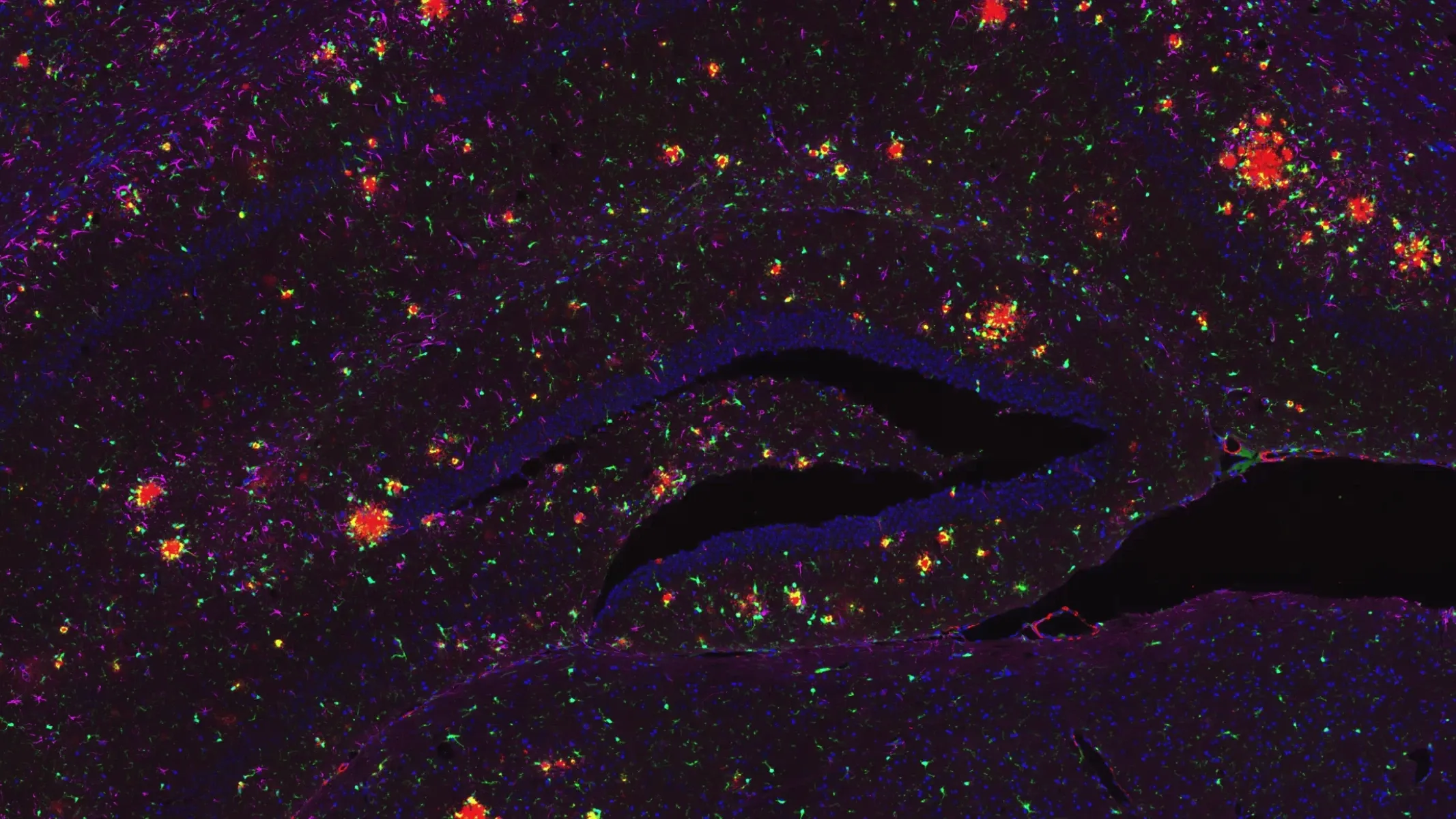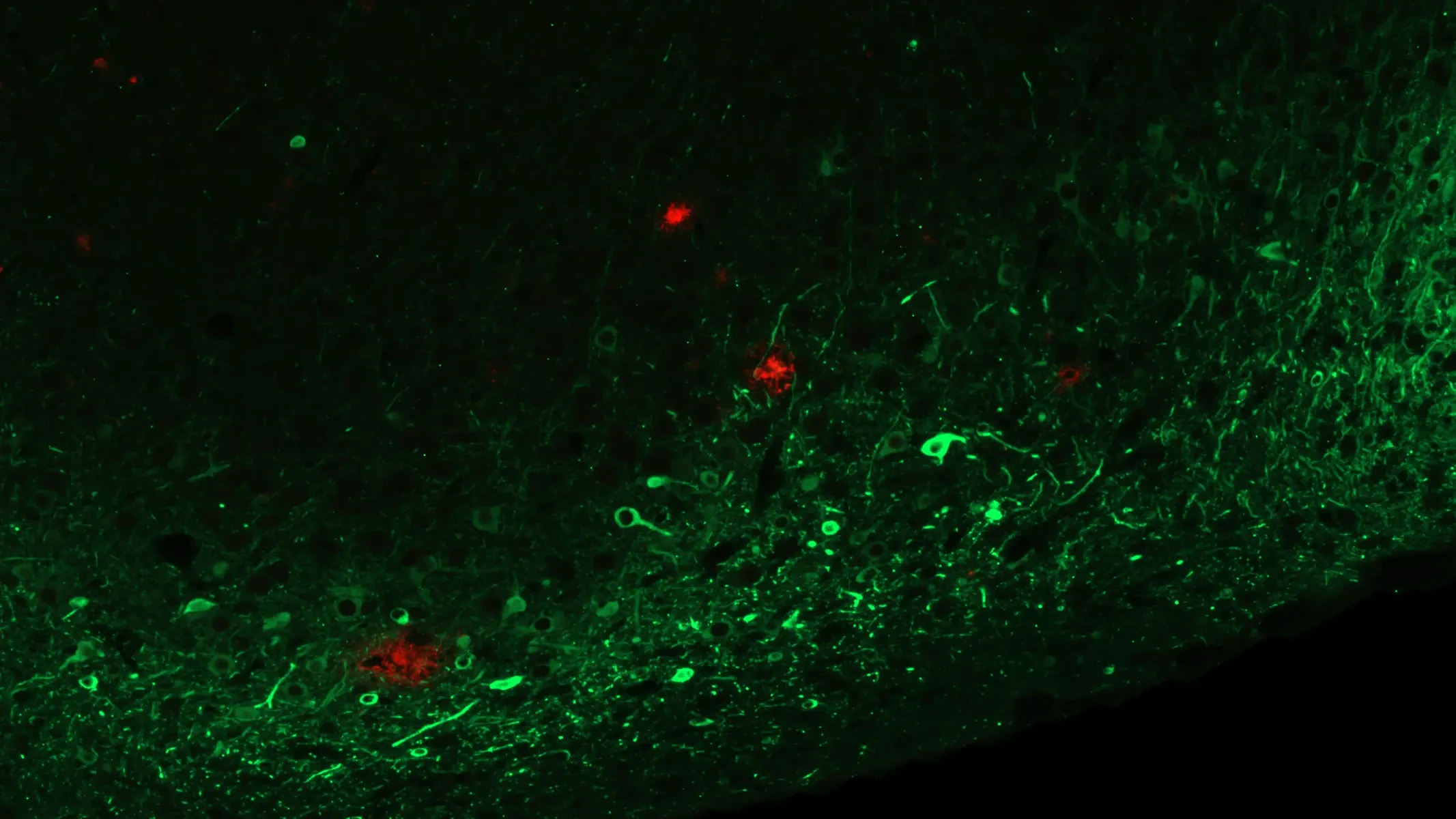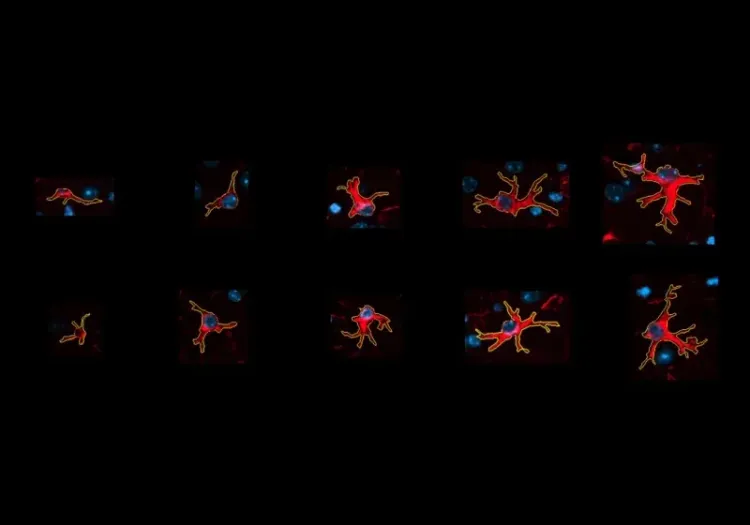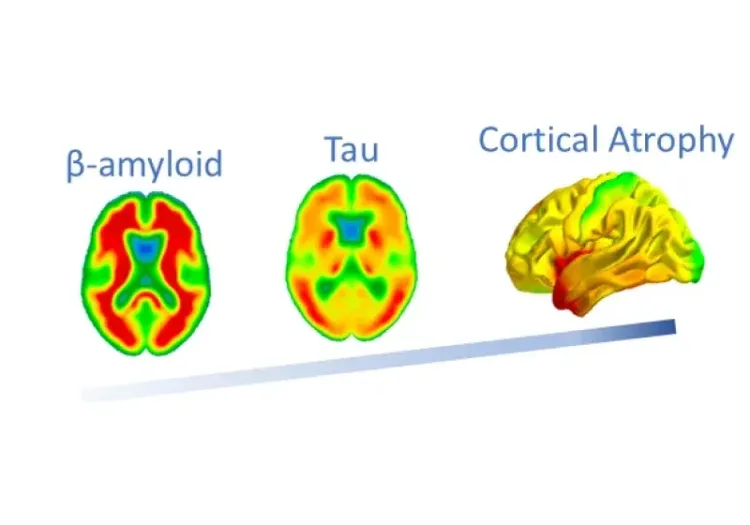Characterization of a New Amyloid-β & Tau Co-Pathology Mouse Model of Alzheimer's Disease
Amyloid-β & Tau Co-Pathology Mouse Model (APP/PS1/hTau) Overview
For this model of Alzheimer’s disease, we perform multiple bilateral stereotaxic inoculation of AAVs overexpressing AAV-hTau (wild-type 2N4R human tau) into multiple brain regions of double transgenic APP/PS1 mice.
This mouse model reproduces several key features of human Alzheimer's disease, including:
- Amyloid-β plaques
- Aggregates of phosphorylated tau in cell bodies and neurites
- Activated microglia
- Reactive astrocytes
- Sleep disturbances
- Regional brain atrophy (volumes and cortical thickness) measured by in vivo MRI scans
Amyloid-β & Tau Co-Pathology Mouse Model (APP/PS1/hTau) Generation
A general schema for the model generation is:
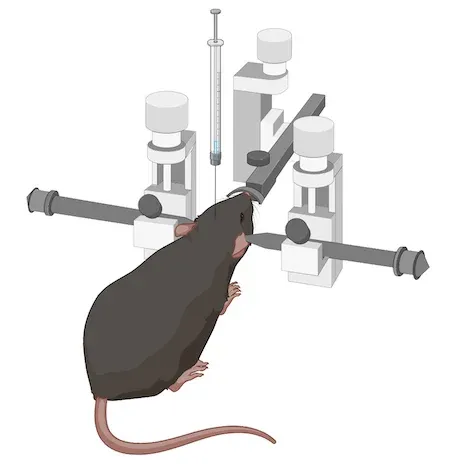
For this specific model, we typically use APP/PS1 mice at ~6 months-of-age (although younger or older mice can be used). We then perform stereotaxic injection of AAV vectors into multiple disease-relevant brain regions. We use digital stereotaxic devices with automated microinjectors for high accuracy & precision.
The in vivo phase of the study typically lasts 4-12 weeks. In-life readouts, such as MRI brain atrophy, shows significant effects as early as 4 weeks. As such, generation of readouts can be provided in a relatively short time frame, especially compared to conventional tau transgenic models of Alzheimer's disease & tauopathies.
Our Validated Measures
- MRI brain atrophy
- Sleep-wake architecture assessment
- IHC & multiplex immunofluorescence
- Microglia and astrocyte morphology analysis
- Neuroinflammatory microenvironment analysis
Learn more about the translatability of this model to human Alzheimer's disease.
Model Characterization
The Interactive Presentation below allows you to explore our characterization of our amyloid-β and human tau co-pathology (APP/PS1/hTau) mouse model, including in vivo data and high-resolution images of entire Multiplex Immunofluorescence tissue sections.
You can simply navigate through this "Image Story" using the left panel.
You can pan around the high-resolution microscopy images using the left mouse button. You can zoom in and out using the mouse/trackpad (up/down) or the + and - buttons in the upper left corner. You can toggle (on/off), change color, and adjust image settings for the channels and segmentations in the Control Panel in the upper right corner.
We suggest using Full Screen Mode for the best interactive experience.
Learn more about our characterization of our APP/PS1/hTau model, our validated measures, and our Preclinical Neuroscience CRO services.
Discover more of our Alzheimer's Disease & Tauopathies Models
Related Content
Up-to-date information on Alzheimer's Disease & Tauopathies and best practices related to the use of translational biomarkers for the evaluation of therapeutic agents in animal models.
Amyloid-β & Inflammatory Microenvironment in Alzheimer's Mice
We have analyzed the complex spatial relationships between β-amyloid plaques, activated & resting microglia, and astrocytes in an APP/PS1 transgenic model.
Astrocyte Morphology in Alzheimer's Disease
An overview of astrocyte morphological analysis and the applications to neurodegenerative disease research and drug discovery & development.
Astrocytes & Amyloid-β Mouse Models of Alzheimer's Disease
Analysis of astrocyte morphology in the amyloid-β plaque microenvironment provides a sensitive measure of disease progression in transgenic mice.
Tau-related Atrophy is Independent of β-Amyloid & APOE ε4
Using MRI, Tau PET, and Amyloid PET imaging biomarkers from the ADNI study, we show that Tau is more strongly linked to brain atrophy than β-amyloid or APOE ε4.
Decreased Brain Glucose Metabolism in MCI is Driven by Tau
We demonstrate a more significant role of tau than β-amyloid in the reduction of cerebral glucose metabolism by analysis of PET images from the ADNI study.
